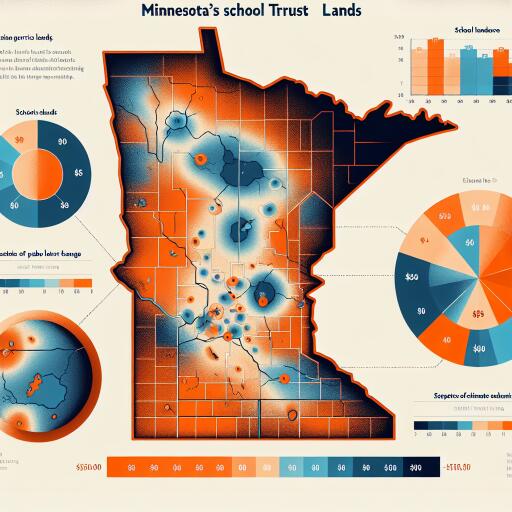
OPINION EXCHANGE | Minnesota’s School Trust lands help fund public education. Climate change is a challenge to that.
Minnesota prides itself on its pristine natural beauty, from its vast wildlife populations to its clear waters and lush forests. Much of the credit goes to the Minnesota Department of Natural Resources (DNR) for its stewardship of these precious resources. However, a significant challenge lies ahead for the DNR in safeguarding these resources against the pervasive threat of climate change.
An astonishing nearly half of the lands under DNR administration, equating to 2.5 million acres—surpassing the size of celebrated Yellowstone National Park—are primarily managed with a focus on short-term financial gains, often overlooking the broader implications of climate change.
These lands are part of the Minnesota School Trust, where all profits derived from mineral extraction, timber sales, and real estate transactions are directed to the Permanent School Fund. This fund, in turn, distributes interest and dividends to support public schools across Minnesota. Over the past decade, upwards of $327 million have been funneled into these educational institutions from the Permanent School Fund. Notably, revenues generated on these lands within tribal reservation boundaries have not benefited tribal schools, despite encompassing 150,000 acres of highly lucrative School Trust lands.
School Trust lands are mandated to be managed with an eye towards “long-term revenue,” in alignment with “sound natural resource conservation and management principles.” However, the push for immediate profit, without the integration of climate change mitigation strategies, raises concerns about the sustainable management and future vitality of these ecosystems, as well as the educational futures dependent on them.
With recent winters among the warmest recorded, it’s essential to acknowledge that climate change has begun to adversely affect northern forests. Tree species such as aspen, fir, and spruce, vital for School Trust revenue, are in decline due to rising temperatures. The current management strategies on School Trust lands, which do not accommodate the adaptation of northern forests to a warming climate, threaten not only future revenue potential but also the overall quality of these forests. For instance, there is a notable absence of plans to enhance plant biodiversity or introduce species more tolerant to warmer climates, despite these strategies being critical for the survival of the forests and their ability to generate revenue for public education in the long term.
The lack of proactive measures to adapt to and mitigate the effects of climate change on School Trust lands is at odds with Governor Tim Walz’s Climate Action Framework, which includes specific recommendations for enhancing the climate resilience of working forests. Unlike federal initiatives, such as the Superior National Forest’s Forest Assisted Migration Plan, state-level management of School Trust lands seems to lag in incorporating climate adaptation measures. This discrepancy suggests that without immediate action, the ecological and financial implications for these lands and Minnesota’s public schools could be dire.
To address this challenge, it is imperative that the Governor, Legislature, and the DNR collaborate to apply the “Natural and Working Lands” recommendations from the Minnesota Climate Action Framework to School Trust lands on a significant scale. Furthermore, consultation with organizations specializing in climate adaptation, including the Great Lakes Indian Fish and Wildlife Commission and the Minnesota Climate Adaptation Partnership, should become a regular part of managing these lands. This expertise could dramatically improve the resilience of northern forests amidst ongoing climate change.
Additionally, exploring carbon offset markets for School Trust lands could present an innovative revenue stream. By engaging in carbon offset markets, these lands could contribute to public education funding while simultaneously aiding in carbon emission reductions. This approach has already seen successful implementation by the Washington state DNR with its School Trust lands.
It’s also crucial to address the oversight of not distributing revenue from these lands to tribal schools, especially considering the longstanding role of tribal lands in generating these funds. Partnering with tribal entities to manage these lands could offer a path towards acknowledging past injustices and pioneering climate-smart forest management strategies.
Implementing Climate Action Framework guidelines on the 2.5 million acres of School Trust lands holds the promise of not only enhancing climate resilience but also securing and potentially increasing revenue for public education. With the climate crisis upon us, taking decisive action now is vital for ensuring that School Trust lands can sustain ecologically responsible forestry, support public education, and contribute to climate change mitigation efforts.





Leave a Reply